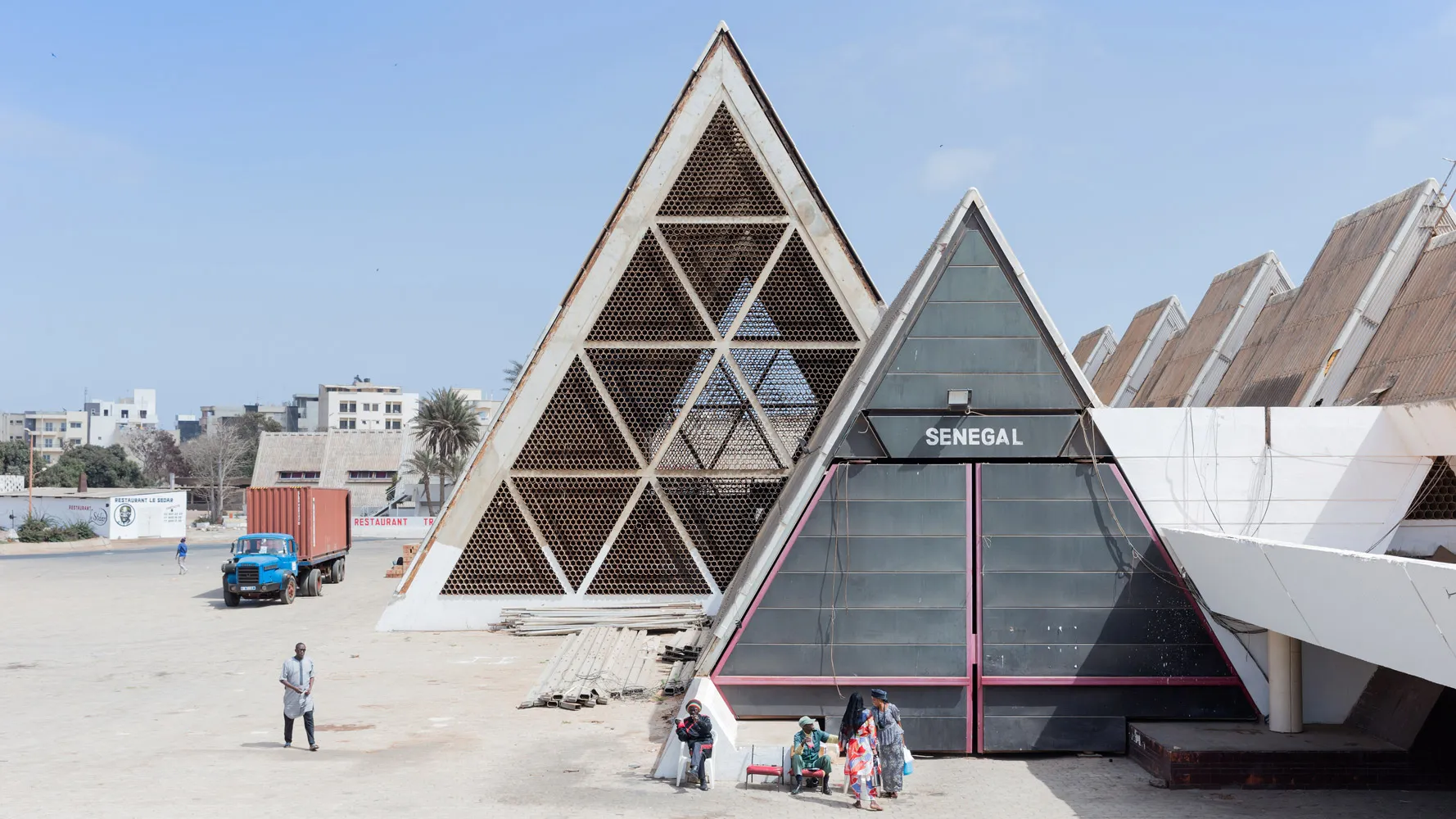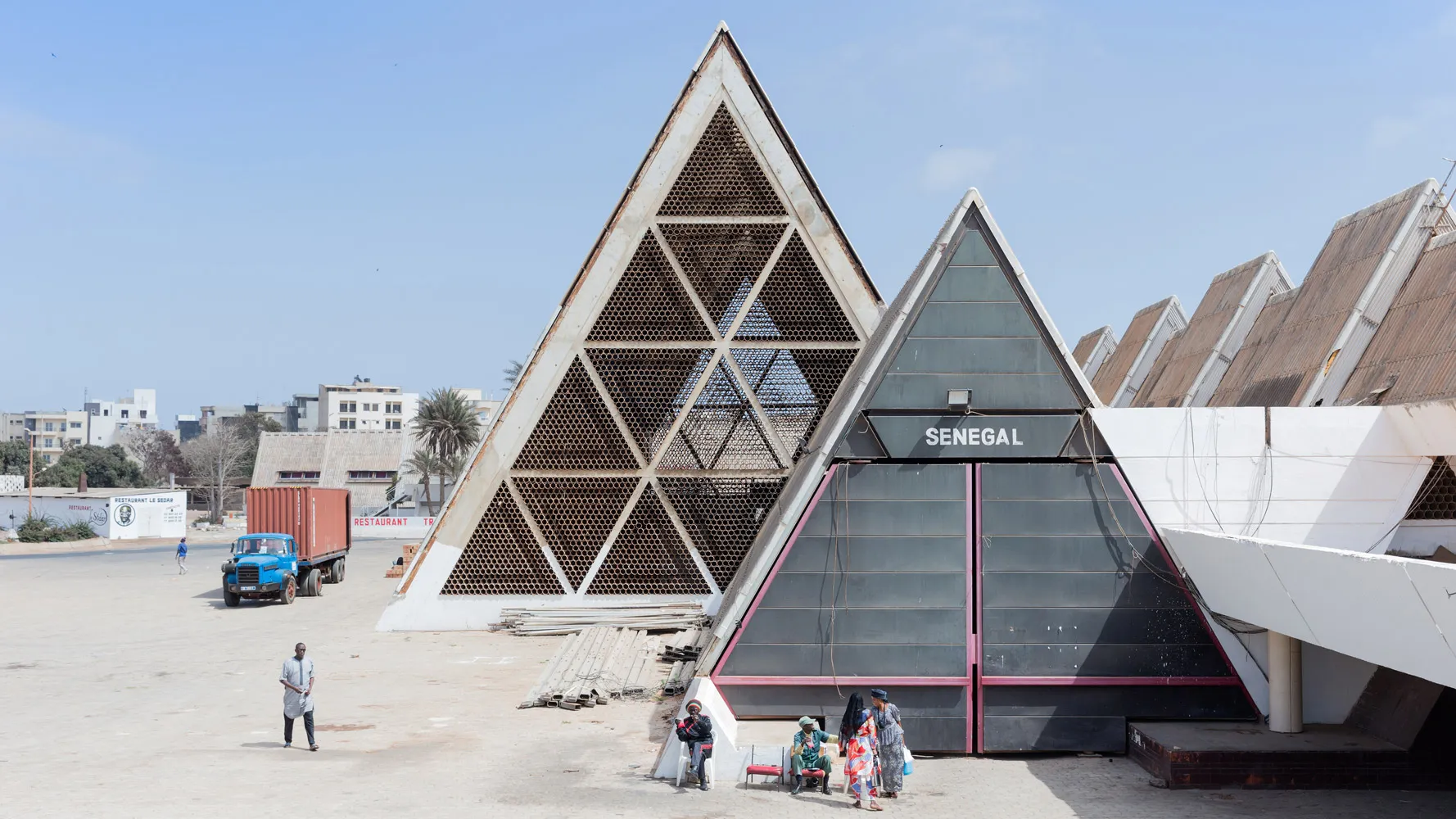Back in Print, Second Edition of 'African Modernism' Surveys Architecture Across the Continent
Review: 'African Modernism. The Architecture of Independence: Ghana, Senegal, Ivory Coast, Kenya, Zambia,' edited by Manuel Herz with Ingrid Schröder, Hans Focketyn, and Julia Jamrozik


Foire Internationale de Dakar (FIDAK), Dakar, Senegal, by Jean Francois Lamoureux & Jean-Louis Marin, 1974. Photograph © Iwan Baan




Architects & Firms
The dearth of literature on African architecture has long been a source of frustration for the continent’s design community. The last decade, however, has seen a gradual change, as young designers witness the stunning rise of African metropolitan centers like Lagos, which has now surpassed Cairo as Africa’s largest city, and have become eager to engage with narratives of post-colonialism. These days, investors are directing enormous resources to the continent’s development, energizing its cities and opening up a new era in its urbanization. A similar wave of hope during the era of African independence in the 1950s and ’60s inspired the continent’s leaders to commission ambitious and extraordinary buildings that might elevate their nations to the world stage. The architects who designed these works were, in large part, imported from Europe, North America, and Israel, and they came with their own ideologies and biases, modulating them—genuinely or otherwise—to suit the local climates, cultures, and conditions.

1

2
James Cubitt's 1956 School of Engineering (2) and playing field (1) at KNUT in Kumasi, Ghana. Photo © Alexia Webster
A half-century later, a great many of these buildings have been neglected and fallen into disrepair, serving as a poignant reminder that the relationship among African aspirations, identity, and history is still fraught with unresolved questions and tensions. Manuel Herz’s African Modernism endeavors to draw attention to this plight in a series of profiles, essays, and photographs of modernist architecture throughout the continent. The care that Herz and his fellow editors, Ingrid Schröder, Hans Focketyn, and Julia Jamrozik, have taken to provide a balanced and comprehensive discussion of the origins of modernism in Africa will make this a seminal work in the discourse of African architecture. Herz—a Swiss architect who has devoted much of his career to humanitarian-oriented architectural research, largely related to Africa—has leveraged his experience into a potent critical awareness.
More than anything else, African Modernism is an exercise in documentation. The lack of prior archival work on the subject made this a daunting task, but it also compelled the editors to conduct thorough original research based on their own travels. For practical reasons, the editors have limited the scope of analysis to just five countries: Ghana, Senegal, Kenya, Ivory Coast, and Zambia. Of course, for those of us who are familiar with African architecture and the continent itself, this leaves many of its richest offerings sorely missed. The editors state emphatically, however, that African Modernism is just the start of a much larger undertaking, and they encourage the wider design community to assist with the effort through further study. In this respect, they have set the bar high.

3

4
Kenyatta International Conference Centre, Nairobi, Kenya, by Karl Henrik Nostvik, 1967-1973, exterior (4) and interior (4). Photos © Iwan Baan
The book examines more than 100 architectural works and presents them in sumptuous detail. The editors walk the reader through the basic information on each building and its design, and match the text with site plans and the breathtaking photography of Iwan Baan and Alexia Webster. Each main chapter is devoted to one country and prefaced with a helpful set of social, political, and economic timelines to give a sense of the broader post-independence context. These chapters are book ended by a diverse array of well-written essays that zero in on particular themes ranging from debates on emergent civic identity to settlement patterns across time. The essays are thoughtful and thought-provoking; they boldly confront the thornier issues surrounding the idea of “independence architecture.” Particularly interesting is Zvi Efrat’s “Proxy Colonialism,” which details how the newly independent state of Israel employed an intentional strategy of exporting its particular blend of Western architecture to African states as a way of exerting influence.

La Pyramide, Abidjan, Côte d’Ivoire, by Rinaldo Olivieri, 1973. Photo © Iwan Baan
The obvious intention of African Modernism is to subvert the negative impressions that many people—including Africans themselves—carry about modernist architecture in the post-colonial context. In so doing, the book may engender rethinking about the value of these works. “To document also means to preserve,” writes Herz. This is both admirable and necessary, though I feel it is hampered by the book’s backward-looking approach. It is clear that the editors are reluctant to stray from the confines of historical analysis, preferring to leave engagement with contemporary criticisms of Africa’s modernist relics to others. But such an engagement would have been appropriate, and even better if it involved the perspectives of African architects and thinkers. Herz’s explicit statement in his introductory text of his intention to use African Modernism as a tool for “normalizing Africa” is problematic. While he is correct that Africa is too often orientalized and relegated to a lesser place in the human story, with its problems distorted into blinding caricatures, the readers of African Modernism are forced to contend with the uncomfortable irony that the book’s editors and contributors themselves—like the independence architects of the ’60s—are drawn almost entirely from Europe, North America, and Israel. The single exception is photographer Alexia Webster, who is from South Africa, which is not one of the book’s focus countries. One wonders whether the “normalization” of Africa can really be achieved, even by those with the best of intentions, if it is done in the glaring absence of African perspectives.
Nonetheless, African Modernism is a truly remarkable book. It offers intellectual rigor, fascinating insights, and marvelous visuals in equal measure. No book collection on African architecture would be complete without it.
This review was first published in RECORD in October 2015.






